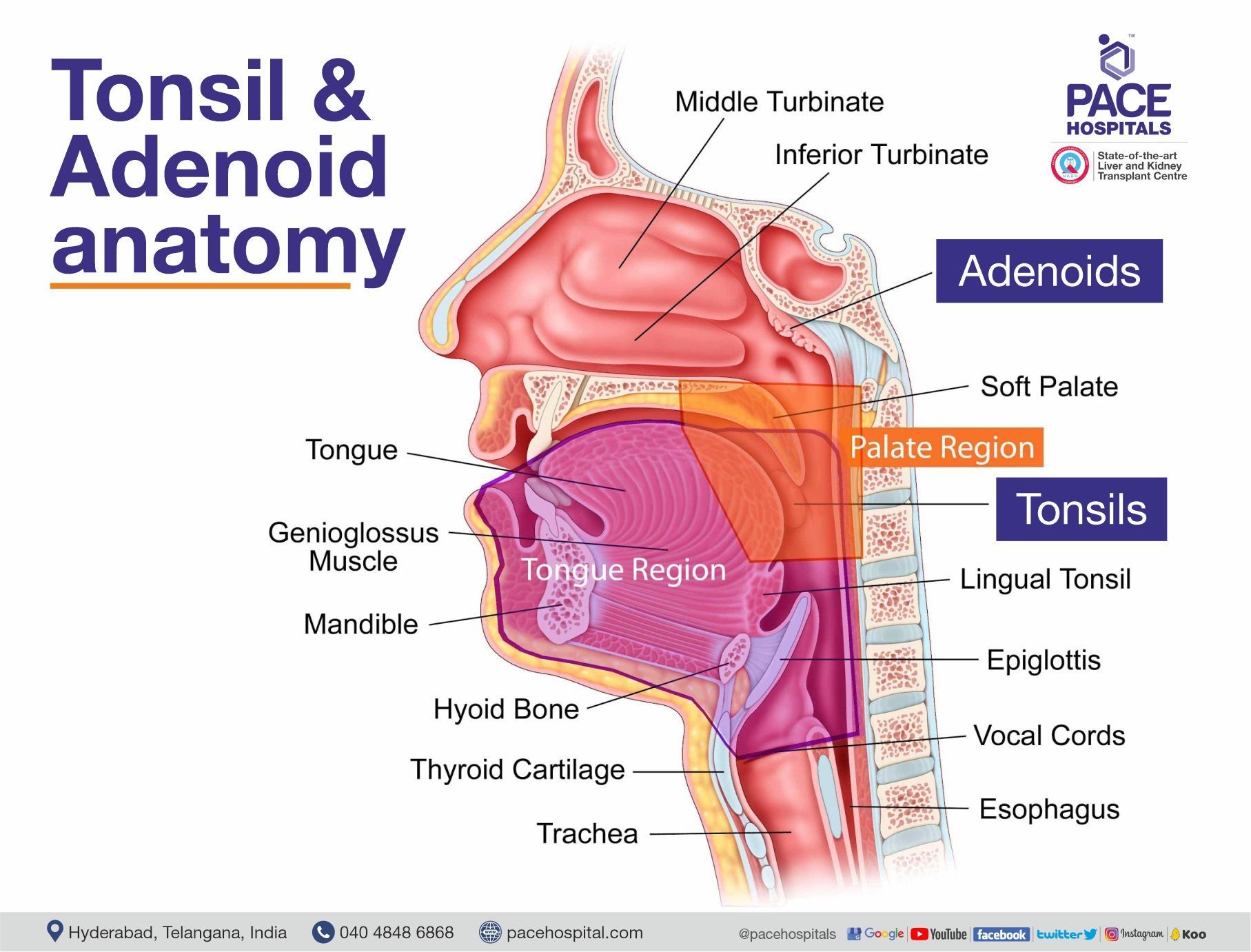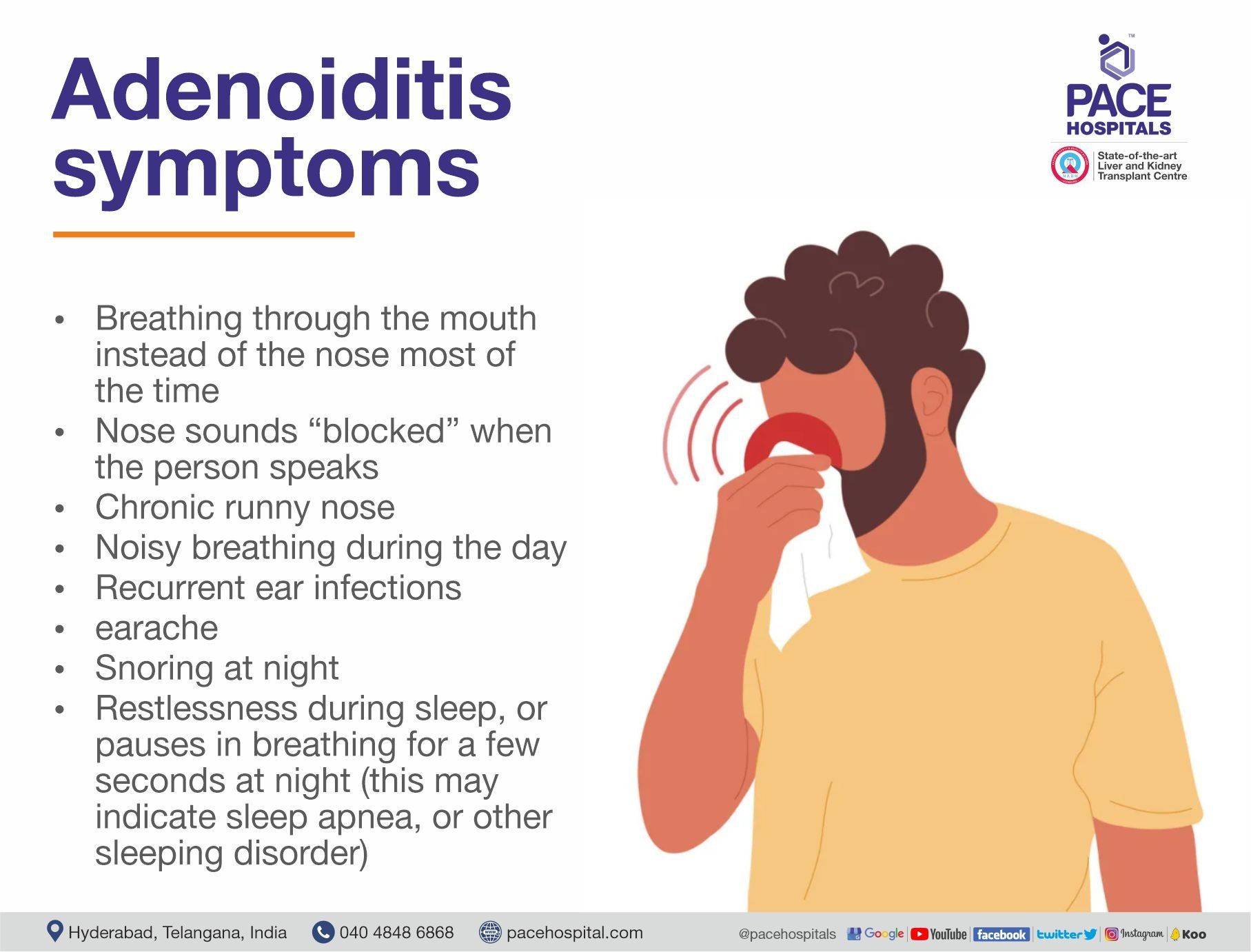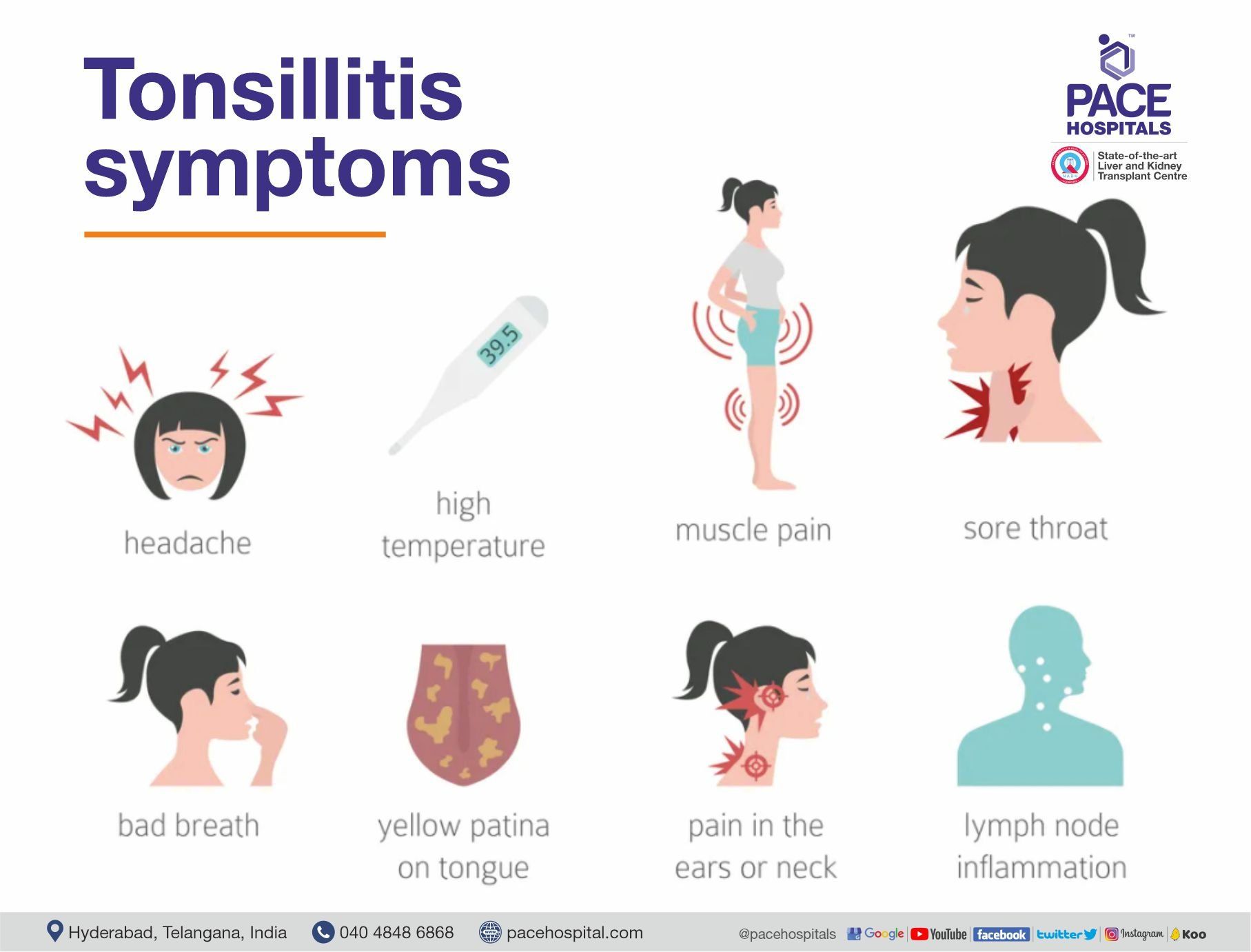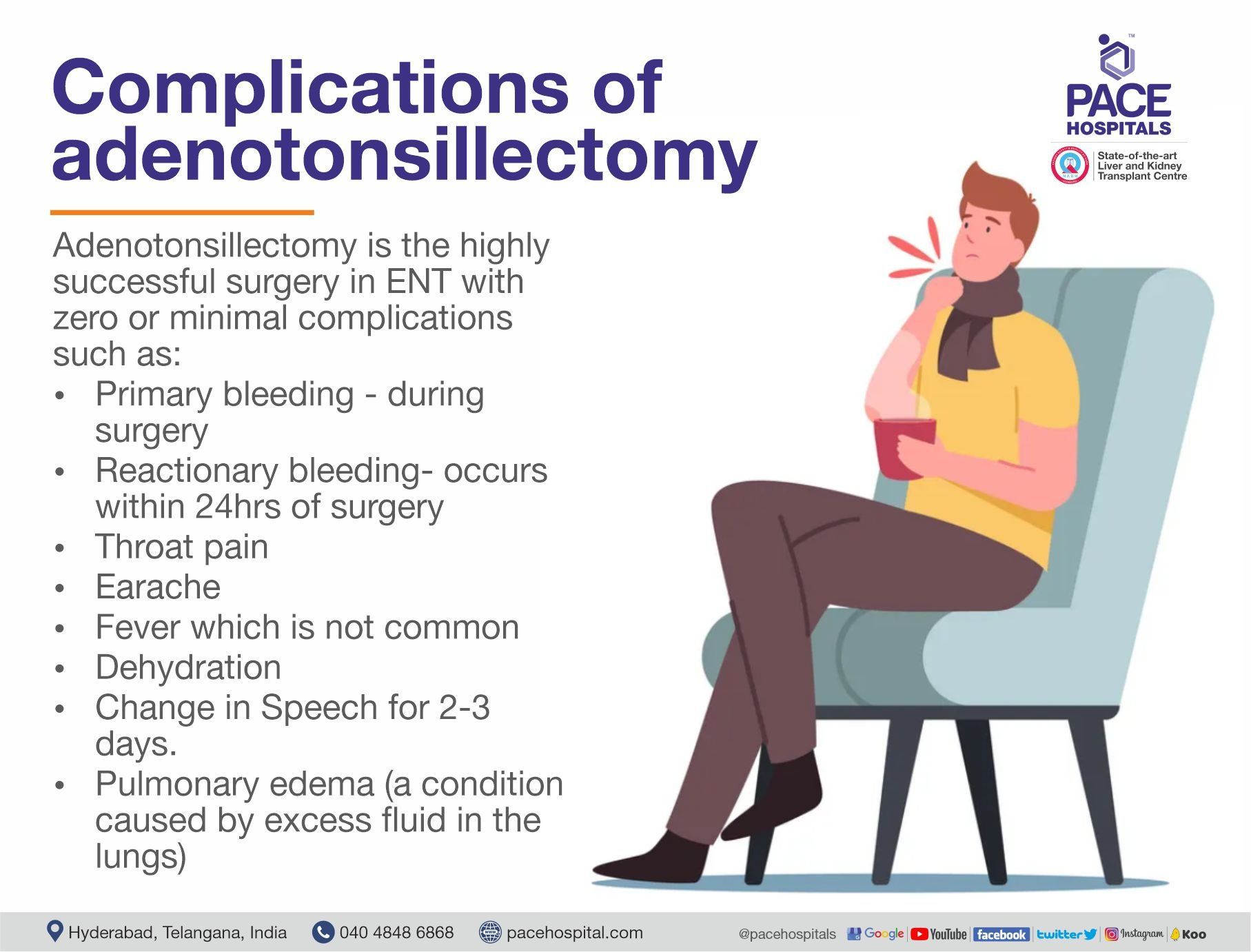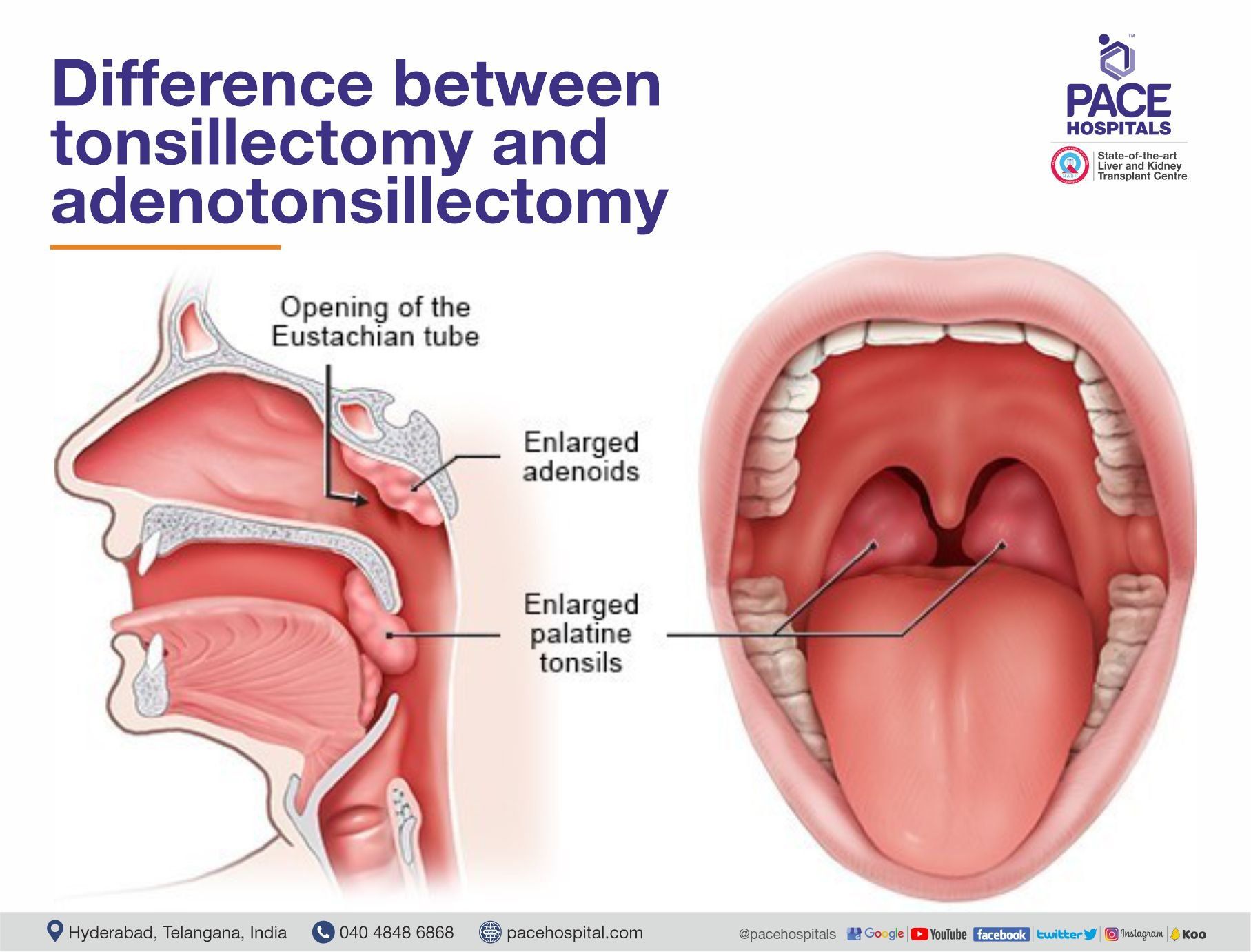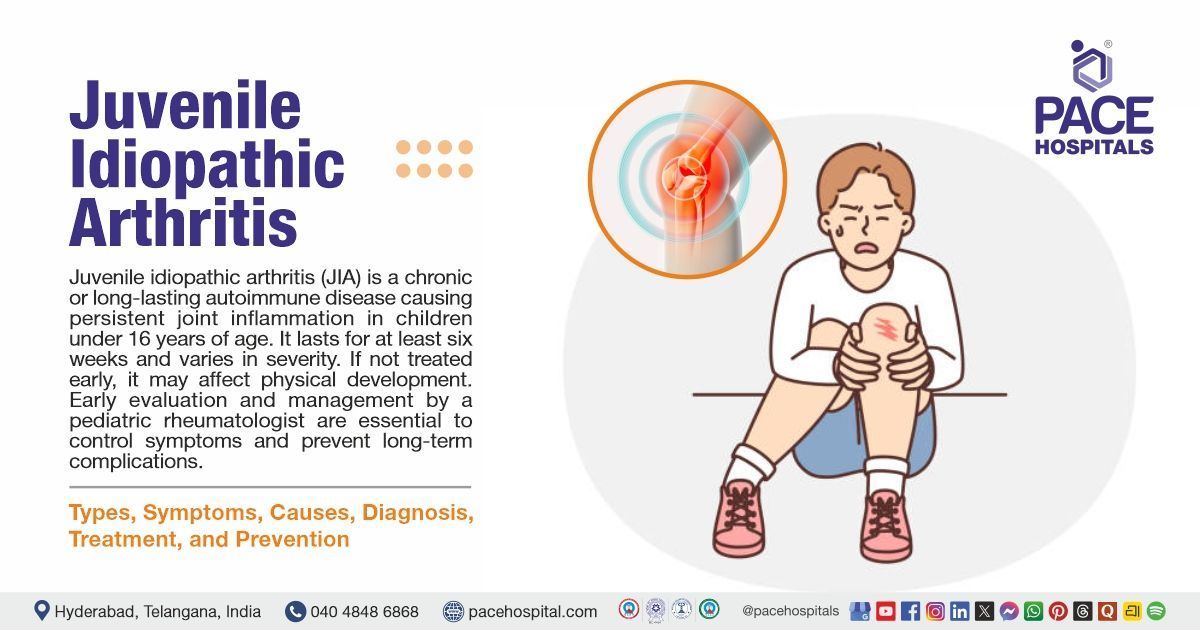Adenotonsillitis - Symptoms, Diagnosis and Treatment
PACE Hospitals
Tonsils are the two round lumps in the back of your throat. Adenoids are high in the throat, behind the nose and the roof of the mouth (referred to as your soft palate). They are not visible through the mouth or nose without special instruments.
Tonsils and adenoids are part of the immune system and help protect the body from disease. They “sample” bacteria and viruses that enter through the mouth or nose. Unfortunately, sometimes they can get infected or cause problems by being too large.
Tonsil and adenoid infection is most common. The infection of tonsils and adenoids occur at age of 3-6 years. The reason for this is the child starts going to nursery or school and starts meeting and playing with other children. So, the child will develop respiratory infections most frequently.
Usually in 90 % of children, adenoids shrink their size after 12 years of age. So, the problem with adenoids after 12 years of age is very rare.
But in contrast, Tonsils remain in the throat lifelong with minimal shrinkage when compared to adenoids. So, this results in infection to your tonsils at any age of your life.
What are the symptoms of adenoiditis?
Based on symptoms, it can be termed as cold or strep throat adenoiditis. Symptoms of adenoiditis include:
- Breathing through the mouth instead of the nose, most of the time
- Nose sounds “blocked” when the person speaks
- Chronic runny nose
- Noisy breathing during the day
- Recurrent ear infections
- Earache
- Snoring at night
- Restlessness during sleep, or pauses in breathing for a few seconds at night (this may indicate sleep apnea, or other sleeping disorder)
What are the symptoms of tonsillitis?
Infection to tonsils is known as tonsillitis.
- Sore throat
- Enlarged tonsils obstructing the oral route
- Exudates or pus on the tonsil
- Pain swallowing
- Fever
- Jugulo digastric nodes swelling
- Obstructive sleep apnoea
- Snoring
There are some conditions in which one tonsil is enlarged and abscess formation in the tonsil known as peritonsillar abscess
Most of the patients in paediatric age group will present with adenotonsillitis, Most of the patients in adult age group will present with tonsillitis alone.
Complications of Adenotonsillectomy
Adenotonsillectomy is the highly successful surgery in ENT with zero or minimal complications such as:
- Primary bleeding - during surgery
- Reactionary bleeding- occurs within 24hrs of surgery
- Throat pain
- Earache
- Fever which is not common
- Dehydration
- Change in Speech for 2-3 days.
- Pulmonary edema (a condition caused by excess fluid in the lungs)
Diagnosis
For tonsillitis, we can diagnose the extent of tonsillar infection with direct throat examination.
- We can see pus or exudates over the tonsil, which indicates active infection.
- Enlarged tonsils
Based on size of the tonsils and level of obstruction if oral route, we can do grading of tonsillar swelling
For adenoids, as they are situated backside of the nose, they are not visible on direct examination.
We have to do x-ray nasopharynx or diagnostic paediatric nasal endoscopy for the diagnosis. So, we can see adenoid mass in the back of the nose obstructing the nasal route.
Management
The symptoms of Aden tonsillitis have recurrence. If the recurrence of symptoms twice or thrice in a year we can treat with antibiotics and antihistamines, decongestant nasal drops and anti-allergic nasal sprays.
If the recurrence of symptoms is 5 times or more than 5 times in a year that is recurrence of symptoms for every 2-3 months in a year surgery is indicated.
Treatment
The surgery for tonsil or tonsillectomy is a day care procedure, means it can be admission to discharge can be done in a single day.
Adenotonsillectomy can be performed in many ways. The surgery will be performed under general anaesthesia while you are sleeping. The surgery usually takes 20 to 30 minutes. You will not feel any pain while the doctor is removing the tonsils. All the tonsils are usually removed, but some patients may benefit from a partial tonsillectomy.
A surgeon will use the technique that is best for the particular patient. The most common ways to take tonsils out include:
- Electrocautery: This method uses heat to remove the tonsils and stop any bleeding.
- Cold knife (steel) dissection: The tonsils are removed with a scalpel. Bleeding is then stopped with sutures or with electrocautery (extreme heat).
- Harmonic scalpel: This method uses ultrasonic vibrations to cut and stop bleeding from the tonsils at the same time.
- Other methods include the use of radiofrequency ablation techniques, a carbon dioxide laser, and/or a microdebrider.
Based on your symptoms and grading of tonsils, the surgeon can decide which technique suits you best.
Difference between tonsillectomy and adenotonsillectomy
Tonsils are situated in the back side of our throat. Enlargement of tonsils results in oral route obstruction. So, TONSILLECTOMY refers to removal of infected tonsils from our oral cavity.
Adenoids are situated at the back side of our nose. Enlargement of adenoids results in nasal blockage mainly. So, ADENOIDECTOMY refers to removal of infected adenoids from nasopharynx.
ADENOTONSILLECTOMY refers to combined removal of infected adenoids along with infected tonsils. Usually in children when there is an infection or enlargement of tonsils, we can suspect enlargement of adenoids as well. As the adenoids are situated just above the tonsils. So, adenotonsillectomy is performed as a combined procedure to relive the obstruction caused by enlargement of the tissue.
Myth: Removing tonsils will decrease immunity
There is one common myth that removing tonsils will decrease immunity. Tonsils and adenoids help in immunity until they get infected. Once they are infected they act as reservoirs for bacteria and viruses.
What is the tonsillectomy surgery cost in India?
The cost of Tonsil surgery / Tonsillectomy surgery in India is approx Rs. 15,000 to Rs. 60,000, and it depends upon the region and equipment used.
The cost of Tonsil surgery / Tonsillectomy surgery in Hyderabad is approx Rs. 25,000 to Rs. 50,000.
What is the adenoidectomy / adenotonsillectomy surgery cost in India?
The cost of adenoidectomy / adenotonsillectomy surgery in India is approx Rs. 20,000 to Rs. 70,000 and it depends upon the region and equipment used.
The cost of adenoidectomy / adenotonsillectomy surgery in Hyderabad is approx Rs. 25,000 to Rs. 60,000.
Share on
Request an appointment
Fill in the appointment form or call us instantly to book a confirmed appointment with our super specialist at 04048486868


